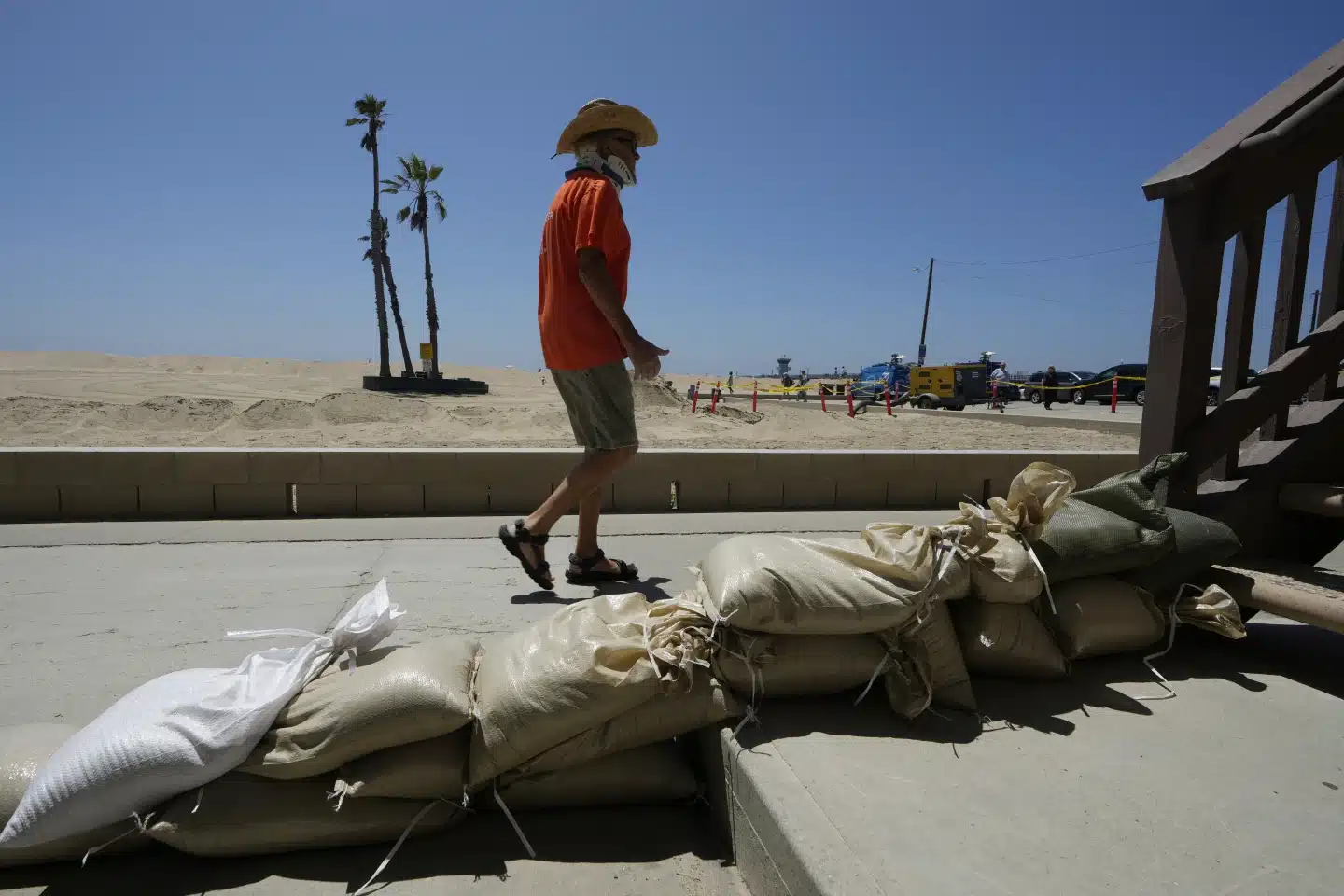NEW YORK – Because of Hurricane Hilary’s prediction, Major League Baseball has rescheduled three Sunday games in California.
MLB announced the revisions as Hurricane Hilary churned off Mexico’s Pacific coast Friday as a strong Category 4 storm.
Arizona at San Diego, Tampa Bay at the Los Angeles Angels, and Miami at the Los Angeles Dodgers will now be part of split doubleheaders on Saturday.
“I’m very grateful that they were proactive in their thought,” Dodgers manager Dave Roberts said. “It’s going to be inconvenient for some people who had Sunday tickets, but getting ahead made sense to me.” This is wild. A hurricane in Southern California is unprecedented. I want to ensure we’re ahead of it, that everyone is safe, and that it passes us by.”
The first game begins at 12:10 p.m. local time, followed by the second at 5:40 p.m. The game at Angel Stadium begins at 1:07 p.m. local time, with the nightcap following at 6:07 p.m. The games are planned for 12 p.m. and 6:10 p.m. at Dodger Stadium.
“In 52 years of living here, I’ve never heard anything like this,” Angels manager Phil Nevin remarked. “A part of me is thinking, ‘Wow.’ Part of you is interested to see what happens with these things, but I’ll be honest: the more I read and hear about it, the more worried I am.”
Because of Hurricane Hilary’s prediction, Major League Baseball has rescheduled three Sunday games in California.
The LA Galaxy and Los Angeles Football Club of Major League Soccer rescheduled games. The Galaxy were supposed to play Real Salt Lake on Sunday, but that game has been rescheduled for October 14. The match between LAFC and Colorado has been moved from Sunday to Wednesday night at BMO Stadium.
Hilary gained intensity early Friday before losing steam, with maximum sustained winds reaching 130 mph (215 kph) in the evening, down from 145 mph (230 kph). When it approached Mexico’s Baja California peninsula on Saturday night, it was still expected to be a hurricane, and when it approached Southern California on Sunday, it was expected to be a tropical storm.
According to the National Weather Service, no tropical storm has landed in Southern California since September 25, 1939.
“To be completely honest, I didn’t even know hurricanes were an option out here,” said Tampa Bay pitcher Zach Eflin. “I didn’t realise that till today. I’m just hoping it’ll be a tropical storm by the time it gets here.”
The NFL will hold two exhibition games this weekend at SoFi Stadium in Southern California. The Los Angeles Rams will meet the Las Vegas Raiders on Saturday night, while the Los Angeles Chargers will face the New Orleans Saints on Sunday night.
The league had yet to respond to inquiries about the status of the two games.
SOURCE – (AP)









